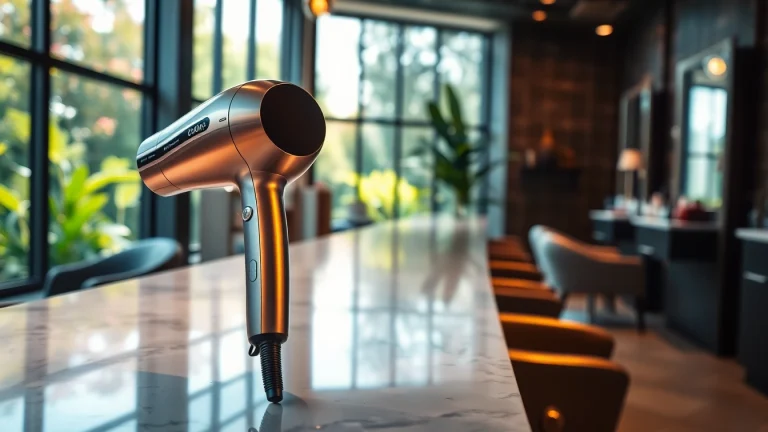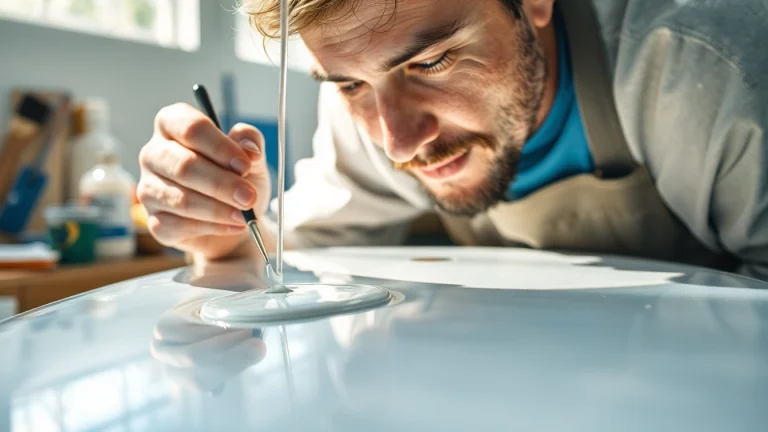
A Comprehensive Guide to Choosing the Right Hair Dryer for Your Hair Type
Understanding Hair Dryers and Their Functionality
What is a Hair Dryer?
A Hair Dryer is an essential electrical device designed to remove moisture from hair through the application of warm air. This device has evolved significantly over the years, from simple handheld tools that produced heat to sophisticated machines with advanced technology aimed at minimizing heat damage and promoting healthier hair. Generally, a hair dryer functions by using a fan that blows air over a heating element, creating a flow of warm air that dries the hair quickly and efficiently.
How Hair Dryers Work
The basic principle behind the hair dryer is quite straightforward: it blows air over wet hair to facilitate evaporation, leading to quicker drying time. Most hair dryers have a motor that rotates a fan, drawing air in from the back of the device and pushing it through a heating element before expelling it out the front. This heating element can be made of different materials such as ceramic or metal, and it can rapidly reach high temperatures.
When you turn on a hair dryer, the fan begins to spin, and the heating element warms up. The temperature of the air can vary depending on the settings selected by the user. Warm air can expedite the drying process due to its ability to hold moisture more effectively than cooler air. Advanced hair dryers also have features such as ion technology, heat settings, and speed options to cater to various hair types and styles.
Types of Hair Dryers Available
There are several types of hair dryers available in the market, each serving different needs.
- Conventional Hair Dryers: The most commonly used type, these are basic, handheld devices suitable for everyday use.
- Professional Hair Dryers: Typically found in salons, these dryers often have higher wattage and various settings for faster drying and styling.
- Ionic Hair Dryers: These dryers emit negative ions that help reduce static and frizz, making them ideal for fine or frizzy hair.
- Ceramic Hair Dryers: Designed to evenly distribute heat, these dryers are beneficial for reducing heat damage and are suitable for all hair types.
- Ultraviolet (UV) Hair Dryers: These are newer on the market and utilize UV light to help sanitize hair while drying it, although their effectiveness is still under study.
Features to Look for in a Hair Dryer
Power and Wattage Recommendations
When choosing a hair dryer, one of the critical considerations is its power and wattage. Typically, hair dryers range from 1000 to 2000 watts. Higher wattage means more powerful airflow and quicker drying times. For individuals with thicker or longer hair, a dryer with at least 1800 watts is generally recommended to effectively reduce drying time. Conversely, those with fine or thin hair may find a lower wattage sufficient, which can also help minimize heat exposure.
Heat and Speed Settings Explained
Having multiple heat and speed settings is essential for versatility and different hair types. Most hair dryers offer at least two heat settings and two speed options, allowing users to adjust the intensity based on their specific needs. A lower heat setting is gentler on delicate or damaged hair, while a higher setting can be effective for thicker hair. It’s advisable to start with a lower setting and gradually increase the heat as needed.
Technology: Ionic vs. Ceramic Hair Dryers
Two significant technologies to consider when choosing a hair dryer are ionic and ceramic. Ionic hair dryers work by emitting negative ions that break down water molecules, allowing hair to dry more quickly. This technology also helps to reduce static and frizz, making it a good choice for users with curly or unruly hair. On the other hand, ceramic hair dryers provide even heat distribution, minimizing hot spots that can cause damage. They are generally favored by those seeking a gentler drying experience.
Choosing the Right Hair Dryer Based on Hair Type
Best Hair Dryers for Fine Hair
For individuals with fine hair, it is crucial to select a hair dryer that offers low heat settings to prevent damage. A lightweight, ionic dryer would be ideal as it reduces drying time without subjecting the hair to excessive heat. Additionally, look for models with a nozzle attachment to focus airflow, allowing for targeted styling without increasing heat exposure.
Best Hair Dryers for Thick or Curly Hair
Those with thick or curly hair may benefit from a more powerful dryer with higher wattage and multiple heat settings. These dryers can handle the density and texture of thick hair more efficiently. Models featuring a diffuser attachment can enhance the natural curl pattern while reducing frizz, making them particularly beneficial for curly-haired individuals.
Recommendations for Damaged Hair
For hair that is already damaged, finding a dryer equipped with heat protection technology is critical. Look for a ceramic or tourmaline dryer that provides even heat distribution and comes with a cool shot button to help set styles without adding additional heat. Additionally, using a lower heat setting will help mitigate further damage while still achieving styling goals.
Best Practices for Using a Hair Dryer
How to Dry Hair Effectively Without Damage
To minimize damage when drying hair, start by gently towel drying excess moisture before using a hair dryer. Sectioning hair into manageable parts can help ensure even drying. Hold the dryer at least six inches away from your hair to prevent heat damage, and move it continuously to avoid concentrating heat in one area. Always finish with a cool shot to help set the style and add shine.
Styling Techniques with a Hair Dryer
The styling techniques you use with a hair dryer can significantly impact the finished look. For volume, dry hair upside down, which promotes lift at the roots. Use a round brush to create curls and waves, directing the airflow down the hair shaft to seal the cuticle. Additionally, for a sleek finish, utilize a flat brush while directing the airflow from the roots to the tips.
Maintaining Your Hair Dryer
Proper maintenance of your hair dryer can extend its longevity and maintain optimal performance. Regularly clean the filter to prevent lint buildup that can affect airflow. It’s also advisable to check for any damages in the cord and plug, as safety is paramount. Store the dryer in a cool, dry place and avoid wrapping the cord tightly around the device as this can cause wire damage.
Frequently Asked Questions About Hair Dryers
How to Choose the Right Hair Dryer Size?
Choosing the right size for a hair dryer primarily depends on your personal needs and habits. For those who travel frequently, a compact, lightweight model would be ideal. However, if you are looking for a device that’s primarily used at home, bulkier, more powerful models are often more effective.
Can I Use a Hair Dryer for Other Purposes?
Outside of drying hair, some individuals use hair dryers for non-hair-related purposes. For example, they can be effective for drying wet paint or heating up patches of cold air in winter. However, caution is advised, as prolonged use outside their intended purpose can lead to motor damage.
What Are the Safety Tips for Using Hair Dryers?
In terms of safety, always read the manufacturer’s instructions before using a hair dryer. Avoid using it in wet conditions to prevent electrical hazards. Ensure the device is turned off and unplugged when not in use. Being mindful of these safety tips will enhance not only the efficacy of your device but also the safety during its use.


